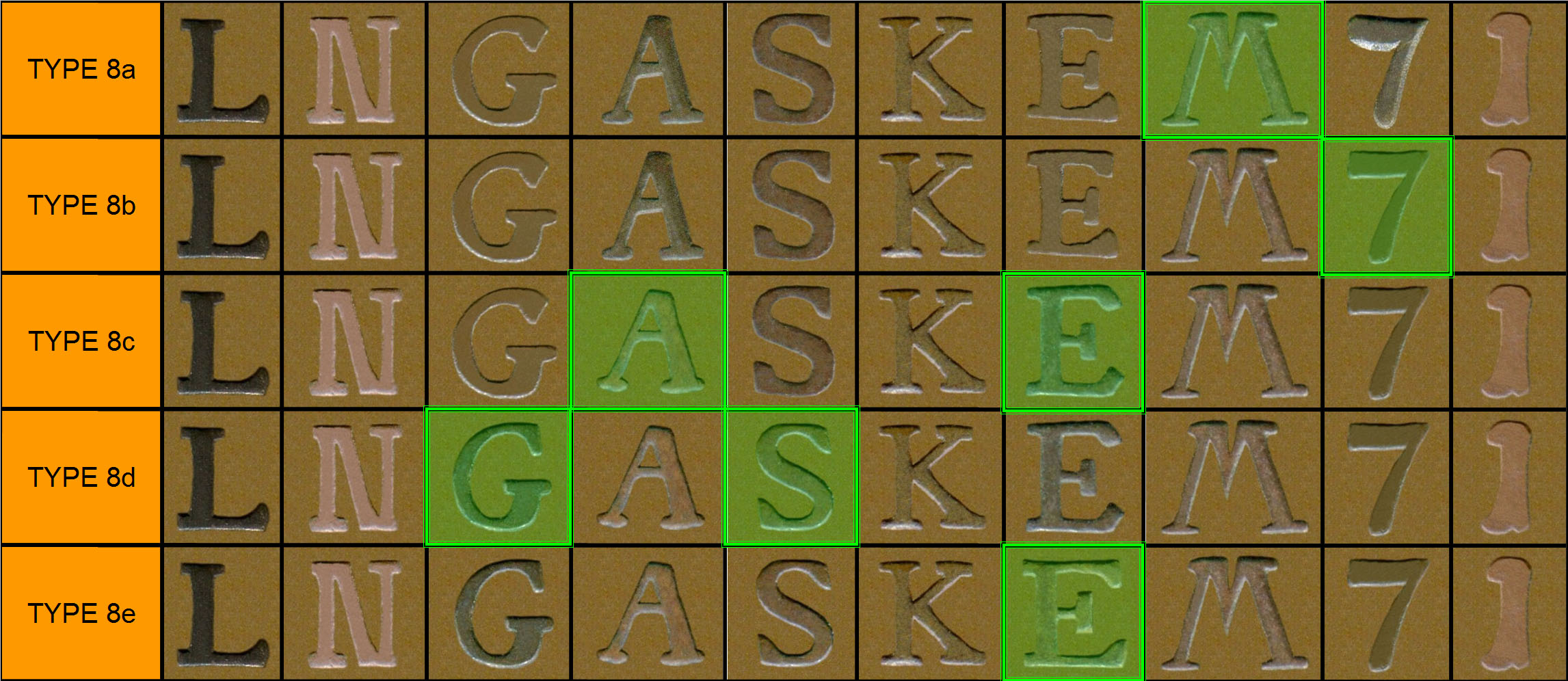Copenhagen
Copenhagen Type 1
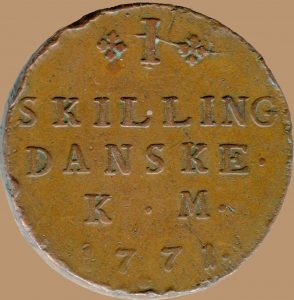
The Copenhagen mintage of the 1 skilling 1771 coins started in 1773 with the so-called “Schimmelmann” variation, named after former treasurer Heinrich Schimmelmann. They were made by Johan Ephraim Bauert and backdated to 1771, the year Johan Henrik Wolff made the original variations at the Altona Mint. "Schimmelmann" (Copenhagen Type 1) was for a long time considered to be the first and original variation of the 1 skilling 1771, but it's now well documented that this mintage actually happened at a later stage as part of the big production program of 5,27 million coins between 1773-1775.
Copenhagen Type 1 is characterized by the tiny letters and the extra spacing. The monogram at the obverse is cut straight at the top of the C's and not formed into curls like later variations. Until now, 13 obverse and 22 reverse dies are known. Looking at the fonts, there are two developments during the production period marked in green below: First the shape of the "S" changes to a more curly letter in Type 1b. Then the "E" changes to a taller and slimmer version in Type 1c. Bauert was quickly criticized for the fonts because their appearance was too different from Wolff's original fonts. In December 1773, it actually came to a point where public concern over the coins authenticity made the Danish authorities publicly guarantee their value and explain the difference in appearance.
Fonts

Copenhagen Type 2
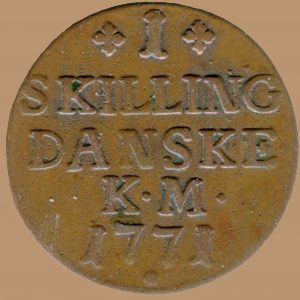
As a response to the criticism over the “Schimmelmann”-appearance, Bauert quickly changed his fonts and style to more closely resemble the variations made at Altona. From the Copenhagen Type 2 fonts below, we can still see some of Bauert’s original style, although the letters have become somewhat enlarged. Especially the characteristic “E”, but also the “M” has kept its original design.
Written sources states that Bauert made 60 pairs of dies for the combined production of Copenhagen Type 1 and Type 2. We assume that most of the Type 2-variations were minted in 1774/75 after the public statement regarding the authenticity of the Type 1 coins. However we cannot rule out that some of the early Type 2 variations were produced during 1773 as well.
One of the more peculiar variations is Type 2f (C271). Here, Bauert has used a different rosette design that is more similar to the 2 skilling 1761 rosettes:
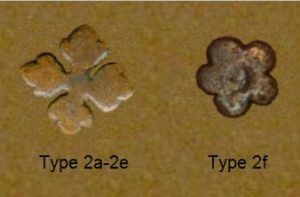
An other design aberration is C259 where the dot behind the K (in K.M.) has been omitted.
Fonts
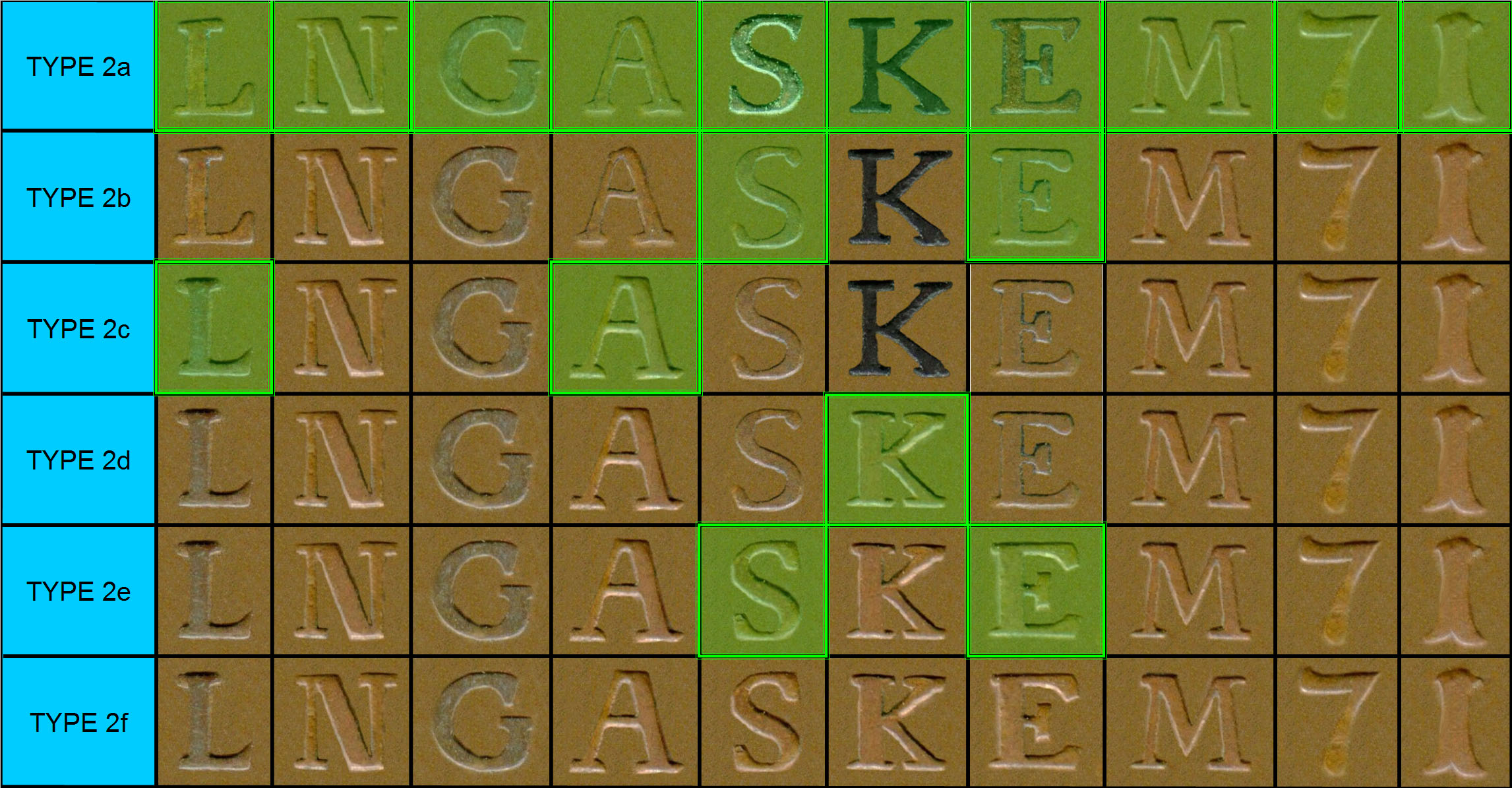
Copenhagen Type 3
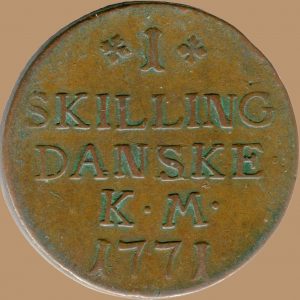
In 1779, the 1771 skilling production in Copenhagen started up again. The first two specimens were actually dated 1779, before it was decided to continue backdating the entire production to 1771 (as was done with the Copenhagen Type 1 and Type 2 series). The Copenhagen Type 3 variations are characterized by the smaller symmetrical "M" with non-parallel legs, often leaning on the left leg.
Some of the variations are "rare" in the sense that they display features that are uncommon or unique. Among the Type 3 variations, we find: C375 ("DANKSE"), C344 ("SNILLING") and C315 (the coin with no dots). Some of the coins have a big dot instead of the usual rosette at the bottom such as C313, C325, C331, C332 and C342. Not to forget the two 1779-coins C301 and C302.
Regarding these two dies with the 1779 imprint, it should be noted that they probably were made before a production halt that occurred during October/November 1779. On November 16th, the Treasury Department finally decided to continue backdating the mintage program in line with current practice at Altona. We therefore speculate that the second 1779 die (C302) could have been taken out of production early (before it cracked) to align the coin appearance at the two mints.
The Copenhagen Type 3 mintage started up in september 1779 and probably lasted until a production halt in July 1781. Some Type 3 dies could in theory also have been warehoused until the production started up again in November 1782, as we have evidence of coin mixes between Type 3 and Type 4. The timing here is however uncertain. We have registered 47 obverse and 52 reverse dies, and believe that the total mintage volume was more than 3,5 million coins.
Fonts
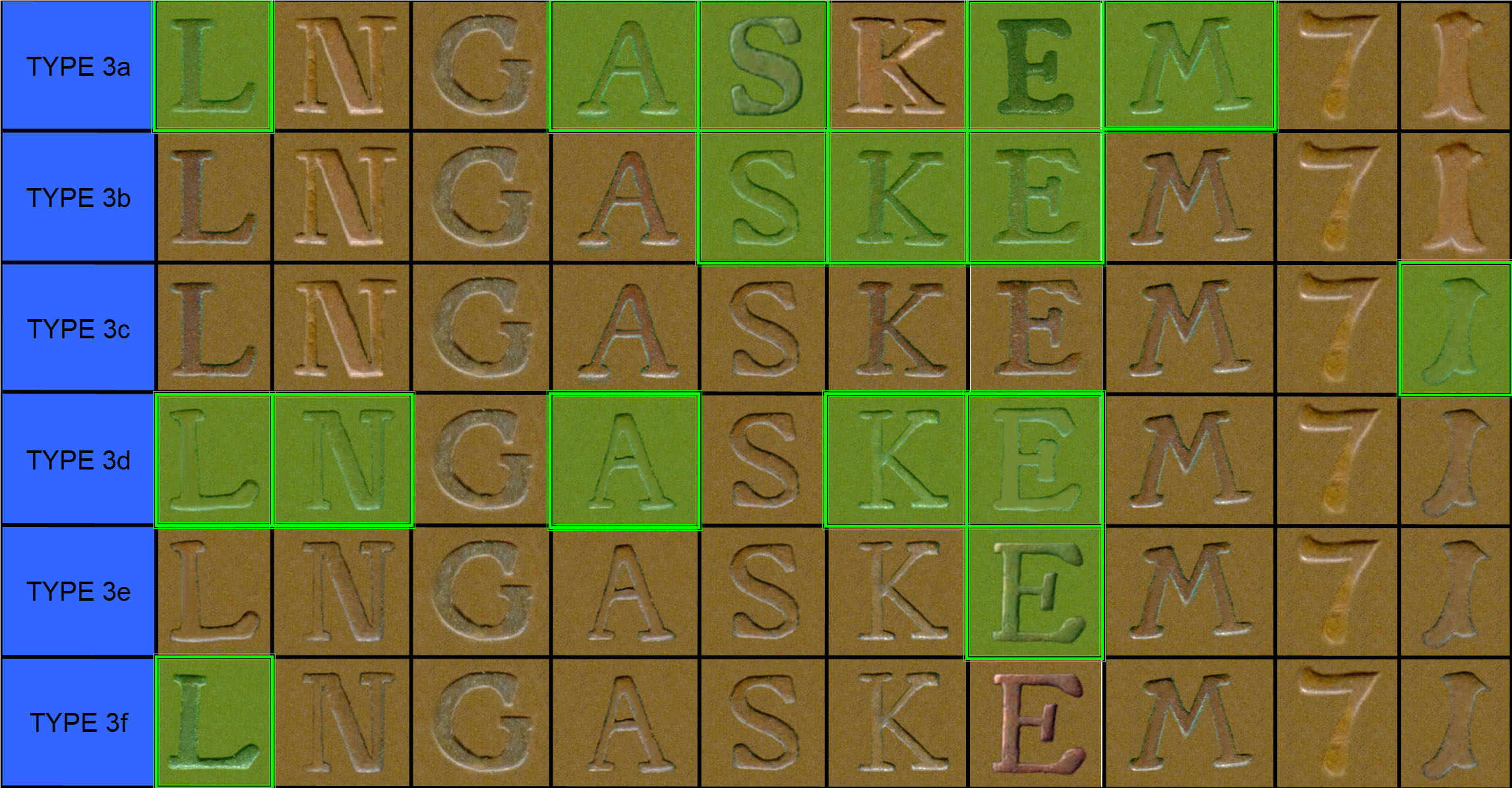
Copenhagen Type 4
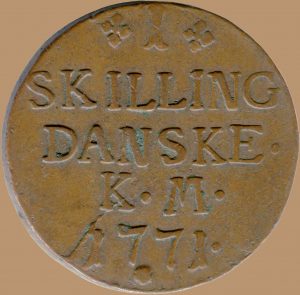
The Copenhagen Type 4 variation is a direct continuation of the Type 3 series, and is characterized by the change in "M" that is now unsymmetrical with the middle skewed sharply to the left. In contrast to future variations, the "G" still has a circular shape.
We have so far found 39 obverse and 41 reverse dies with these characteristcs. The mintage took probably place between November 1782 and early 1783 and constituted approximately 2 million coins.
Fonts
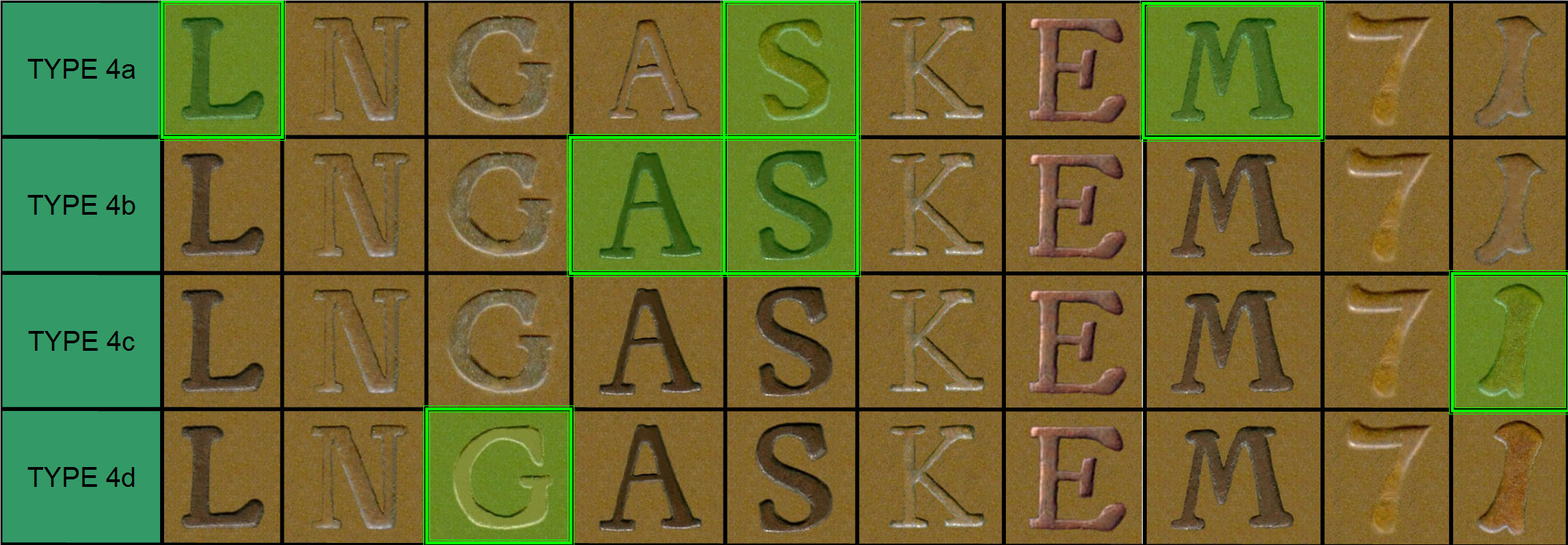
Copenhagen Type 5
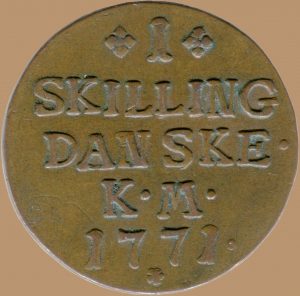
There was an urgency to ramp up the production quite substantially in the early parts of 1783. Aditional copper planchets were therefore secured from a merchant in Altona to be able to deliver close to 200.000 coins every week this year. The Type 5 dies were used in the production from the earlier parts of 1783 in a hectic environment.
Johan Henrik Wolff at the Altona Mint had a sick leave between April and September this year. To maintain the Altona production, Bauert now had to supply 1771 skilling dies to both mints. Between May and July, he therefore helped out by sending 36 pairs of dies. We observe that the early Type 5 dies were used at the Copenhagen Mint during the first half of 1783, while many of the later dies were used at Altona during the second half.
We have so far found 39 obverse and 35 reverse dies from Copenhagen Type 5, and estimate that the total mintage constituted between 3 and 3,5 million coins. We believe that as many as half of these coins could originate from Altona.
We do not have a complete overview of the Type 5 dies that was sent to Altona, but we know about a few of them from die combinations:
Reverses: C542, C545, C546, C547, C561, C562, C563, C564, C568, C569, C570, C571
Obverses: CO542, CO545, CO546, CO547, CO548, CO561, CO564, CO565, CO566, CO567, CO568, CO569, CO570, CO571
These dies are also on average significantly more common than dies from the Copenhagen mintage. A map of the Altona/Copenhagen die mixes can he found here.
There were made several alterations to the dies that distinguish the Copenhagen Type 5 mintage series: We observe a change in the "G" letter that now loses its circular shape. We also notice a change in the “N” that grows somewhat in size and a change in the shape of the “S”. Apart from this, the series is a direct continuation of Type 4 with the short "L" that also distinguishes this variation from future production series.
There are a couple of well known coins from this series as well: C529 ("SKISLING"), C531 ("SKILLIING MK") and C505 (With the double rosettes at the top).
Fonts
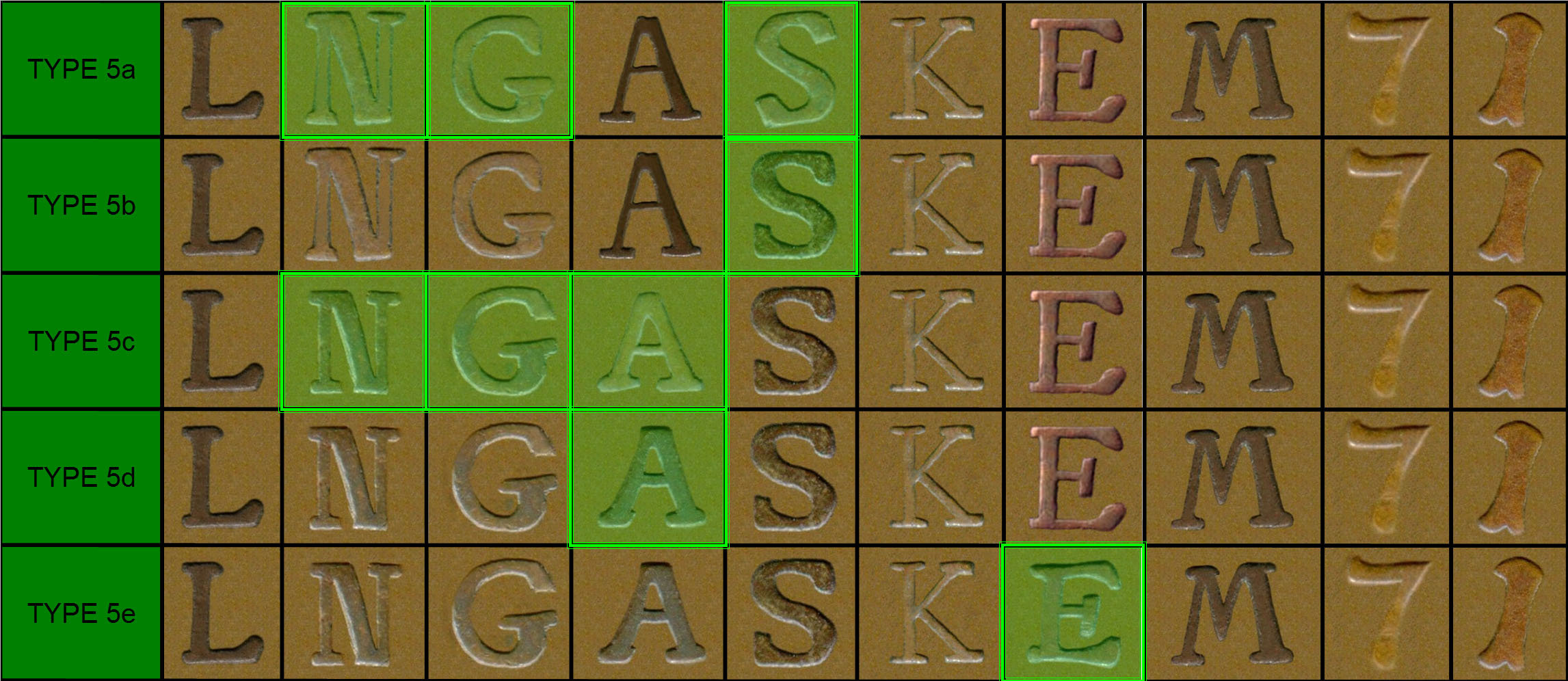
Copenhagen Type 6
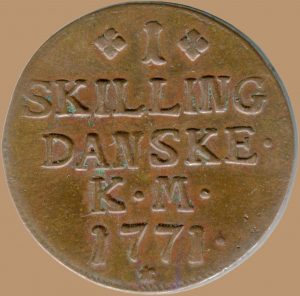
The Copenhagen Type 6 variation is the most common production series (69 obverse and 76 reverse dies) and is divided into two separate classifications as the "E" transforms from a non-symmetrical to a symmetrical shape. However, the main characteristic is the long "L" and the change in "M" to a letter type with less skew to the left. The "G" assumes a drop shape at the start, and the "A" gradually gets pointier at the top, transforming into the Type 7 "A". A third, quite subtle variation (Type 6c), is characterized by the increased size of "K".
As for the Type 5 dies, many of the Type 6 dies were also sent to Altona to help out during Johan Henrik Wolffs sick leave. We don’t have an accurate overview of all of them, but so far we’ve identified the following dies to have been used at the Altona Mint:
Reverses: C601, C602, C603, C604, C605, C606, C607, C608, C609, C612, C614, C615, C647
Obverses: CO601, CO602, CO603, CO604, CO605, CO606, CO607, CO608, CO610, CO612, CO613
These dies are also on average significantly more common than Type 6 dies minted in Copenhagen. We believe that the total Type 6 mintage constituted approximately 5,5 million coins, fairy evenly divided between Altona and Copenhagen. The Copenhagen mintage took probably place during the summer months of 1783. In Altona, we find evidence of a somewhat later mintage period that stretches from mid 1783 and into the spring of 1784.
The more known coins from the Type 6 series are C617 ("DANAKE"), C671 ("DNASKE") and C642 (the "EURO"-coin). As a curiosity, it is worth mentioning that C628 has traces of an error where "K.M." clearly has been written over "77". These traces have also been seen on many earlier dies, including C271, C311, C373, C414 and C454, but here the "77" traces are harder to spot.
Fonts

Copenhagen Type 7
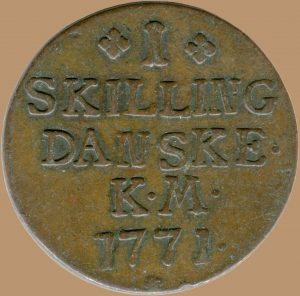
The Copenhagen Type 7 variation is characterized by the two transformational "M"'s that precede the larger and more characteristic Type 8 "M". More hidden features are the increase in the size of the "N" from Type 7c and the subtle change in letter "A" from Type 7e. From this variation, the "7"-font was also changed quite noticeable for the first time. All mintage (34 obverse and 39 reverse dies) was carried out in 1783 as part of the big production program this year. There is no evidence that these dies were mixed with Altona dies, and from the mintage numbers, we conclude that all Copenhagen coins from the Type 7 and Type 8 were struck at the Copenhagen Mint.
Fonts
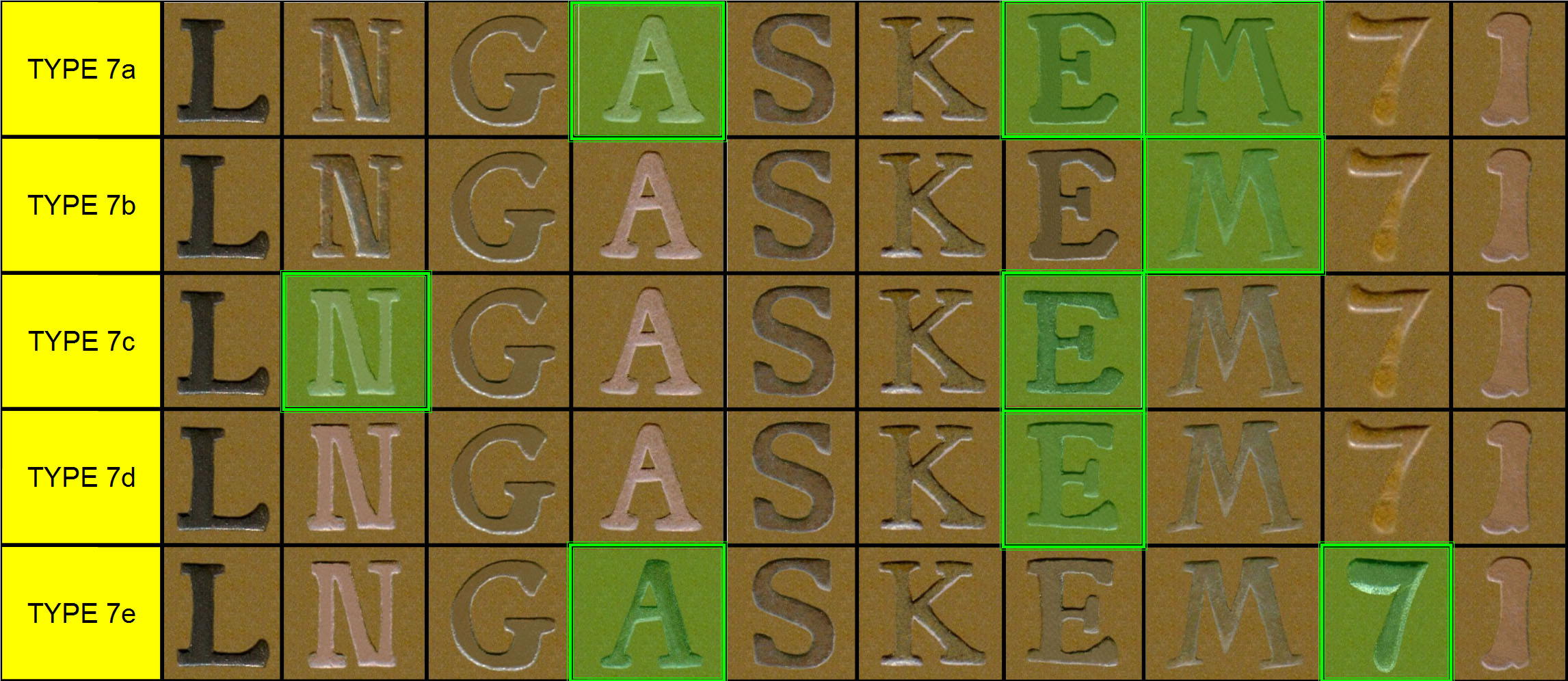
Copenhagen Type 8
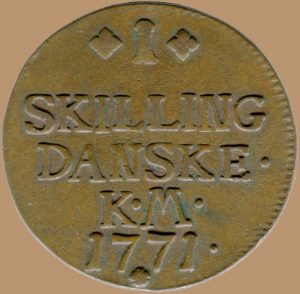
The Copenhagen Type 8 variation is characterized by the large "M" with the short middle and non-parallell legs. The obverse is gradually getting smaller until it assumes its final size during the 8b-production.
We believe that the Type 8 mintage started during September/October 1783. As we observe a sudden fundamental change in fonts and style, we suspect that Johan Ephraim Bauerts son, Georg Valentin Bauert, has assisted his father in making the Type 8 dies (although he didn’t officially become an apprentice at the Mint until May 1784).
Johan Ephraim Bauert was absent for appx 9 months due to illness from the last part of 1784 and into 1785. During this period, there was no 1771 skilling mintage in Copenhagen. The last Type 8 coins were minted during July 1785. Altogether, we believe that there we minted just above 4 million Type 8 coins, and we have so far registered 61 obverse and 70 reverse dies.
Fonts
